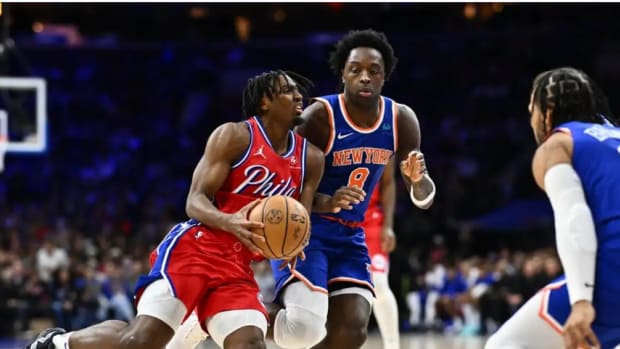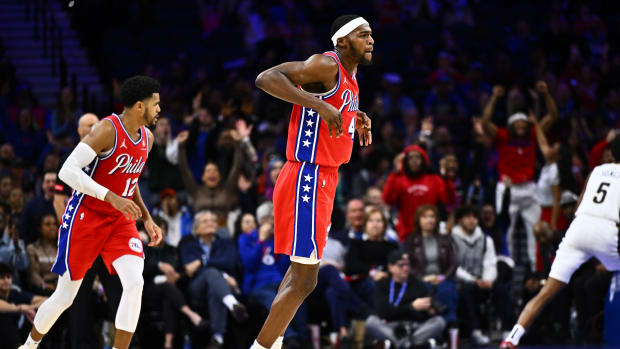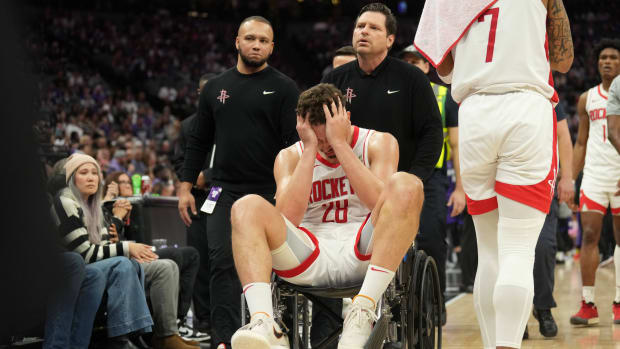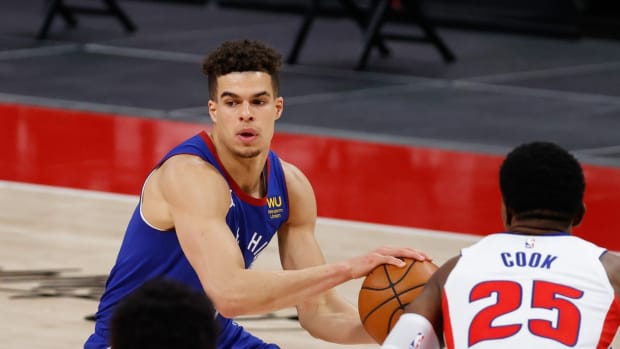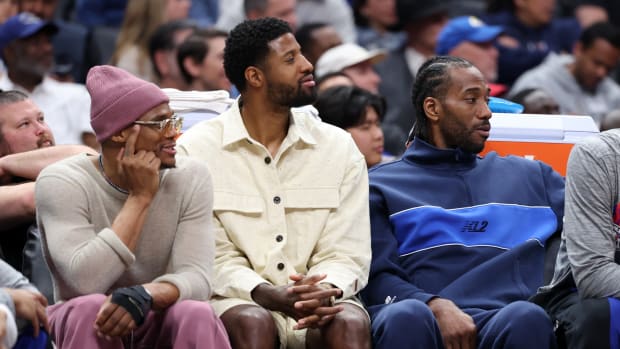Chasing Perfection book excerpt: How NBA champions are made
Editor's note: The following is an adapted excerpt from Chasing Perfection: A Behind-the-Scenes Look at the High Stakes Game of Creating an NBA Champion by Andy Glockner. Available from Da Capo Press, a member of The Perseus Books Group. To purchase, click here.
Months after the national team camp had ended, one of the players who had participated was sitting on a metal folding chair off to the side of the practice court at his team’s facility, recounting the conversation that had helped change him for the better.
“This is crazy, you’ll like this,” the player said. “So, I was talking to Kevin Durant—I ask people, from time to time, good shooters, ‘When you’re off, what is the thing you go back to?’ Not that I ask everybody, just from time to time you just talk to someone and ask. And Kevin Durant said, ‘I need to be in my heels. So when I’m in my heels, I’m stronger. I want my heels to be solid on the ground as I’m shooting.’
Golden Touch: How to shoot like Steph
“I said, ‘I’ve never heard that before.’ This was just last summer at the USA thing, and so I was kind of playing around with it, and it was during that camp—which probably wasn’t the time to play around with it—but I was trying to feel my heels while I was shooting, and there’s something to it. Because when you’re on your toes, your balance isn’t there, but you don’t want to be with your toes up, because you don’t want to be fading back.
“That’s why a lot of us miss all of our shots is because we get lazy in our core, and we’re kind of curled back, or we’ve got our shoulders back, or our weight is somehow just a little bit back, and we [leave them] short. We miss our shots short all the time, and a lot of it’s just because, I believe, of our body posture in our shot.”
The player then rose from his chair and started to demonstrate what he was talking about, first leaning forward onto his forefeet, with his body slightly following suit, and then showing the difference in body posture when his heels were solid on the ground at the start of a shooting motion.
“I feel if I’m engaged, I like to try to be bent just barely forward—so it was really interesting,” he said. “I was just like, ‘Wow.’ It was hard for me, kind of, to be in my heels to go. I mean, I can get on my heels, but to do it, it felt like everything was going to tip backwards. But sometimes, it would feel right. I would feel strong.”
• MORE NBA: Roundtable: NBA sleepers in tourney | NBA Mock Draft 1.0
The player was interested in what he had been told and what he was feeling when he first tried it out, but he needed to figure out a way to make the movement natural to him, and allow him to incorporate it into his full-speed basketball actions. He felt some comfort immediately while doing it on catch-and-shoot chances, since on those plays you’re already standing in the spot from where you will lift off. Working the new technique into his shots when he was on the move, though, took some significant alteration of his established workout routines.
“One of my movements that’s been tough for me has been step-ups,” he said, referencing longstanding issues he’s had with one of his knees. “Usually, it’ll hurt for the first two reps, and then I’ll kind of get into a groove and then I can do them, but you can’t do that in a game all the time. You don’t always get a couple of reps; you kind of do because you’re running around, but I need to feel good the first time. I want to feel good the first time I’m trying to do something, because you get stiff in a game, use a timeout, come out, and you gotta go shoot right away.”
2016 NBA draft Big Board 1.0: Top 20 prospects
The player first incorporated heel-loading movements into his leg lifting routines. Then he began to practice them every time he went down the stairs in his house, reinforcing the weight distribution and technique of “being solid in his heels” to muscle memory. The technique changes eventually took, and not only did his shooting consistency improve in all aspects of his game, but unexpectedly, his knee felt increasingly better.
“I had no intention of [it helping my knee],” he said. “I was really just looking out about my shot. I’m just having a conversation, it wasn’t even about trying to figure anything out. I was talking to someone, and then I was just playing with it, right? And then it turned into this.”
“This” was one of the greatest shooting seasons in NBA history, and one of the stories this book is all about.






























